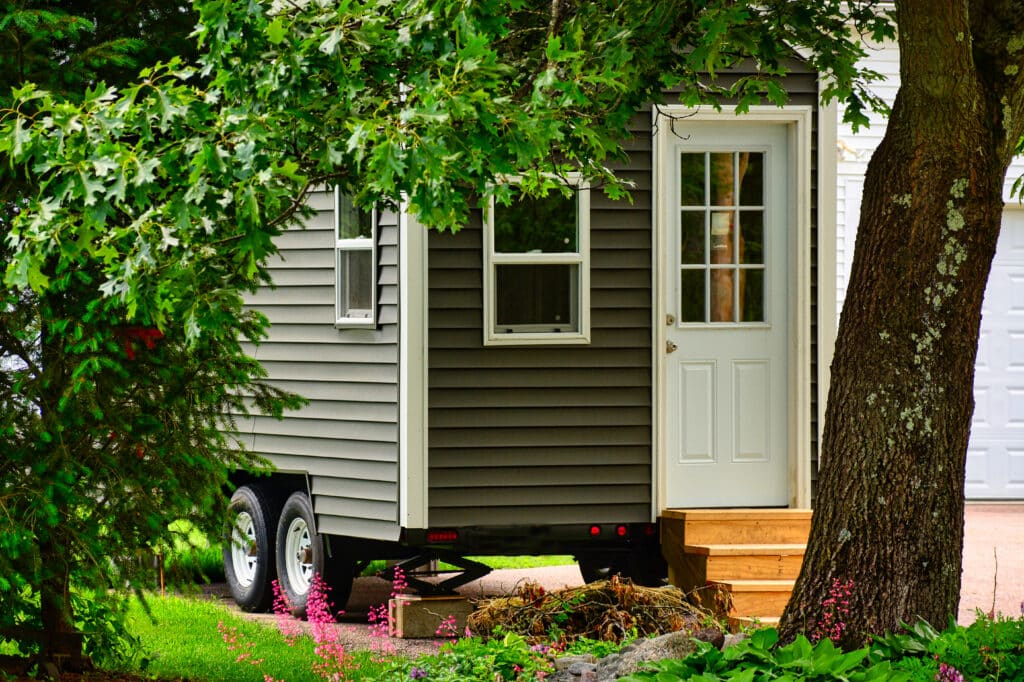The Rise (and Plateau?) of Tiny Homes
Tiny homes once dominated headlines as a revolutionary, cost-effective housing solution, promising financial freedom and minimalist living amid skyrocketing costs. Fun fact: the average tiny home uses 80% less energy than a standard U.S. house. But in 2025, are they still a viable alternative to traditional homeownership, or has the trend faded?
Housing Costs vs. Tiny Homes: A Financial Comparison
Housing costs are crushing many Americans. The National Association of Realtors (NAR) pegs the median U.S. home price at $396,900 in January 2025—a 4.8% jump from last year. Tiny homes, meanwhile, range from $30,000 to $80,000, depending on size and customizations, offering a cheaper entry point for those priced out of the market.
Picture this: instead of a $2,000 monthly mortgage, you’re spending $500 on utilities and upkeep. That’s the tiny home promise—but there are trade-offs:
- Zoning Laws & Regulations: Cities like Portland allow Tiny Homes on Wheels (THOWs) on private land, but Miami demands permits, making placement tricky.
- Resale Value: Unlike traditional homes, tiny homes often depreciate, much like RVs.
- Financing Limitations: Mortgages rarely apply; you’ll likely need personal loans with higher rates.
The lower upfront cost can help you dodge massive debt and hit financial stability faster—think more cash for savings, travel, or a side hustle. Plus, maintenance is lighter, with smaller square footage slashing heating, cooling, and utility bills.
Request Your Free Consultation
Who Benefits Most from Tiny Homes Today?
Tiny homes aren’t for all, but they shine for:
- Retirees downsizing to stretch their dollars.
- Remote workers craving mobility with a THOW.
- Minimalists and green advocates chasing lower carbon footprints.
- First-timers who can’t swing traditional homes but want ownership.
Tiny Homes vs. Alternative Affordable Housing
Tiny homes aren’t the only game in town. They’re affordable but limiting—alternatives might fit better:
- Manufactured Homes: Starting at $40,000, with more space and financing options.
- Accessory Dwelling Units (ADUs): Compact units on existing lots, great for rental income.
- Co-Living Spaces: Shared setups with lower rent for communal vibes.
Considering a tiny home to save cash? Compare these for long-term fit. Check our Housing Counseling Services for more.
The Downsides of Tiny Home Living
Tiny homes dazzle, but they’ve got quirks:
- Limited Space & Storage: 200-400 sq. ft. demands ruthless downsizing.
- Hidden Costs: Land, utilities, and custom tweaks can sneak up, sometimes rivaling apartment life.
- Zoning Restrictions: Many cities still tag them as temporary, complicating placement.
Long-term, flexibility’s a snag—tiny homes depreciate while traditional ones might profit you later. It’s a gamble if your needs shift.
Are Tiny Homes Still a Worthwhile Investment?
Where zoning’s friendly, tiny homes stay cost-effective. But with rising material costs and financing hiccups, they’re not universal winners. Weigh the pros and cons—our Debt Relief Programs can help if debt’s looming.
Green fans love them—less energy, less waste, smaller footprint. Just watch for off-grid rules that jack up costs; dig into local laws first.
Final Considerations Before Going Tiny
Before you leap, ask:
- Got a long-term housing plan?
- Can you hack a tiny space?
- Checked local zoning?
- Ready for surprise costs?
- Okay with the limits?
Making the Right Housing Choice
Tiny homes aren’t one-size-fits-all but work for budget-savvy folks who can handle zoning and lifestyle shifts. Lower costs and eco-perks shine, though viability depends. Some cities embrace them for housing crunches; others clamp down—research your spot to keep it legit.
Committed tiny-dwellers rave about financial freedom and mobility. If it’s calling you, scope out legalities and options. Could it fit your wallet’s future? Think hard.
Frequently Asked Questions About Tiny Homes
Are tiny homes a good investment?
They’re cost-effective but depreciate, unlike traditional homes. Ideal for low-maintenance living or flexibility.
How much does a tiny home cost?
$30,000 to $80,000, based on size and specs—DIY’s cheaper, pre-built’s pricier.
Can I get a mortgage for a tiny home?
Rarely. You’ll likely need personal loans or RV financing with different rates.
Where can I place a tiny home?
Depends on zoning—some spots allow private land or RV parks; others need permits.
What are the biggest challenges?
Space crunch, zoning hassles, sneaky costs, and financing. Think long-term.
Cheaper to maintain than traditional homes?
Yep—lower bills and upkeep. Off-grid extras might sting, though.








